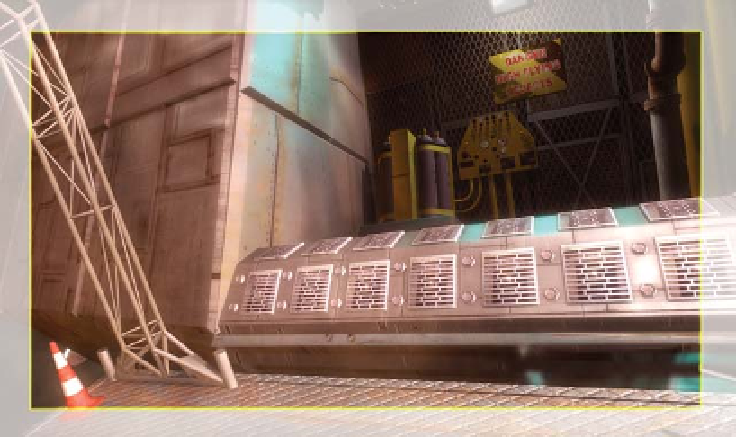Graphics Reference
In-Depth Information
Blurring and artifacting are the result of the ever-so-slight resizing and
repositioning of images that were rendered to the final project's output size.
When you scale Over-Rendered images downwards, they maintain superb
integrity, whereas applying minor scale changes to smaller images inflicts
substantial subpixel blending distortion. Additionally, you have the option to
enlarge your renderings without any degradation should the client want to
make subtle changes after all your renderings are complete.
Over-Rendering also includes the concept of rendering more than you intend to
show. Take, for example, rendering a large 3D environment set where other
objects will be composited within. If you render only what you think will be
used at compositing time, you are restricting the designer to your estimate.
The next image shows a set built for an HD short AniMill created for R&D
purposes. The washed area beyond the green box represents unused
Over-Rendering. We would often render scenes with Overshot to allow the
compositor (me) to reposition the set or add shake to the shot without the
edges of the scene becoming visible.
With the abundant supply of hard disk storage, there's only one reason
not
to
Over-Render - rendering time, of course, can be the deciding factor to how
much you Over-Render, if at all.
Dawn's Early Flight. © 2002 AniMill


